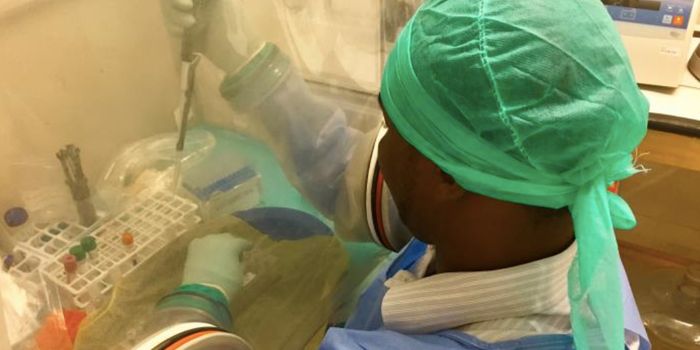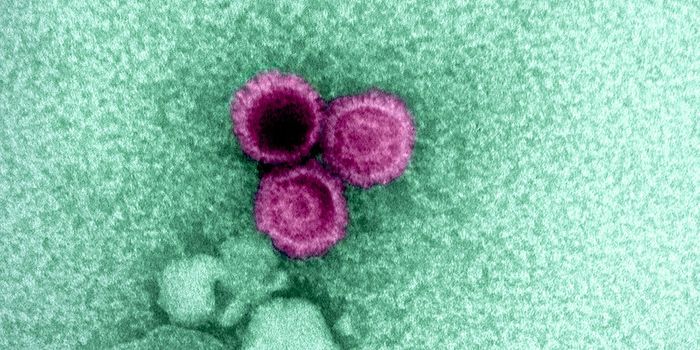The common cold virus grows best at cooler temperatures (like in your nose), just a few degrees below core body temperature. Why? Because various components of the immune system work better at warm temperatures. Recently, Yale researchers identified two new temperature-dependent host defense strategies that combat the common cold.
The same group already showed that interferon is secreted at 37
oC (98.6
oF, core body temperature) in response to the cold virus -
rhinovirus (RV). However, when they inhibited the interferon response, viral replication still depended partially on temperature, suggesting that additional temperature-dependent antiviral activities were at play.
Ultimately, they showed that, at 37oC compared to 33oC, RV-infected cells underwent apoptosis earlier at 37oC than at the cooler temperature of 33oC; virus replication also decreased at 37oC compared to 33oC. In addition, they showed that the RNA-degrading enzyme RNAseL effectively decreased RV replication at 37oC versus 33oC.
To show that apoptosis helped curb viral replication at 37oC, they overexpressed the anti-apoptotic protein Bcl-2. RV replication increased in cells when Bcl-2 was overexpressed (to inhibit apoptosis).
Since dsRNAs accumulate during RV infection, they reasoned that the RNA-degrading enzyme RNAseL may be expressed at a higher level at 37oC than 33oC. This was indeed the case. The level of RNAseL mRNA was 2.2-fold higher at 37oC than 33oC. They used siRNA to knockdown RNAseL production in RV-infected cells; RNAseL knockdown increased RV replication at 37
oC compared to when RNaseL was not overexpressed at this temperature..
What’s more, the group found that apoptosis and RNaseL are redundant mechanisms that cells use to control virus replication. To show this, they compared the effects of inhibiting apoptosis and RNAseL simultaneously or separately. In infected control cells, there was a 42-fold difference in peak viral titer at 33oC versus 37oC (indicating enhanced viral replication at 33oC). The difference was 61-fold or 13-fold if RNAseL or apoptosis were inhibited, respectively. However, if both RNAaseL and apoptosis were inhibited simultaneously, there was only a 5-fold difference in peak viral titer.
Overall, these findings reveal new ways to target the common cold, and this is especially important for people who have a weakened immune system or asthma, since the virus can exacerbate symptoms.
Sources: PNAS,
Yale, Wikipedia




![Master Lab Weighing: Accuracy, Compliance & Audits [eBook]](https://d3bkbkx82g74b8.cloudfront.net/eyJidWNrZXQiOiJsYWJyb290cy1pbWFnZXMiLCJrZXkiOiJjb250ZW50X2FydGljbGVfcHJvZmlsZV9pbWFnZV85MWRmZmRjMDIwNDBlMWJjMzYwN2ZiYWY2ZjI4ZGMzYzBmZGMwZGMyXzkxOTcucG5nIiwiZWRpdHMiOnsidG9Gb3JtYXQiOiJqcGciLCJyZXNpemUiOnsid2lkdGgiOjcwMCwiaGVpZ2h0IjozNTAsImZpdCI6ImNvdmVyIiwicG9zaXRpb24iOiJjZW50ZXIiLCJiYWNrZ3JvdW5kIjoiI2ZmZiJ9LCJmbGF0dGVuIjp7ImJhY2tncm91bmQiOiIjZmZmIn19fQ==)




